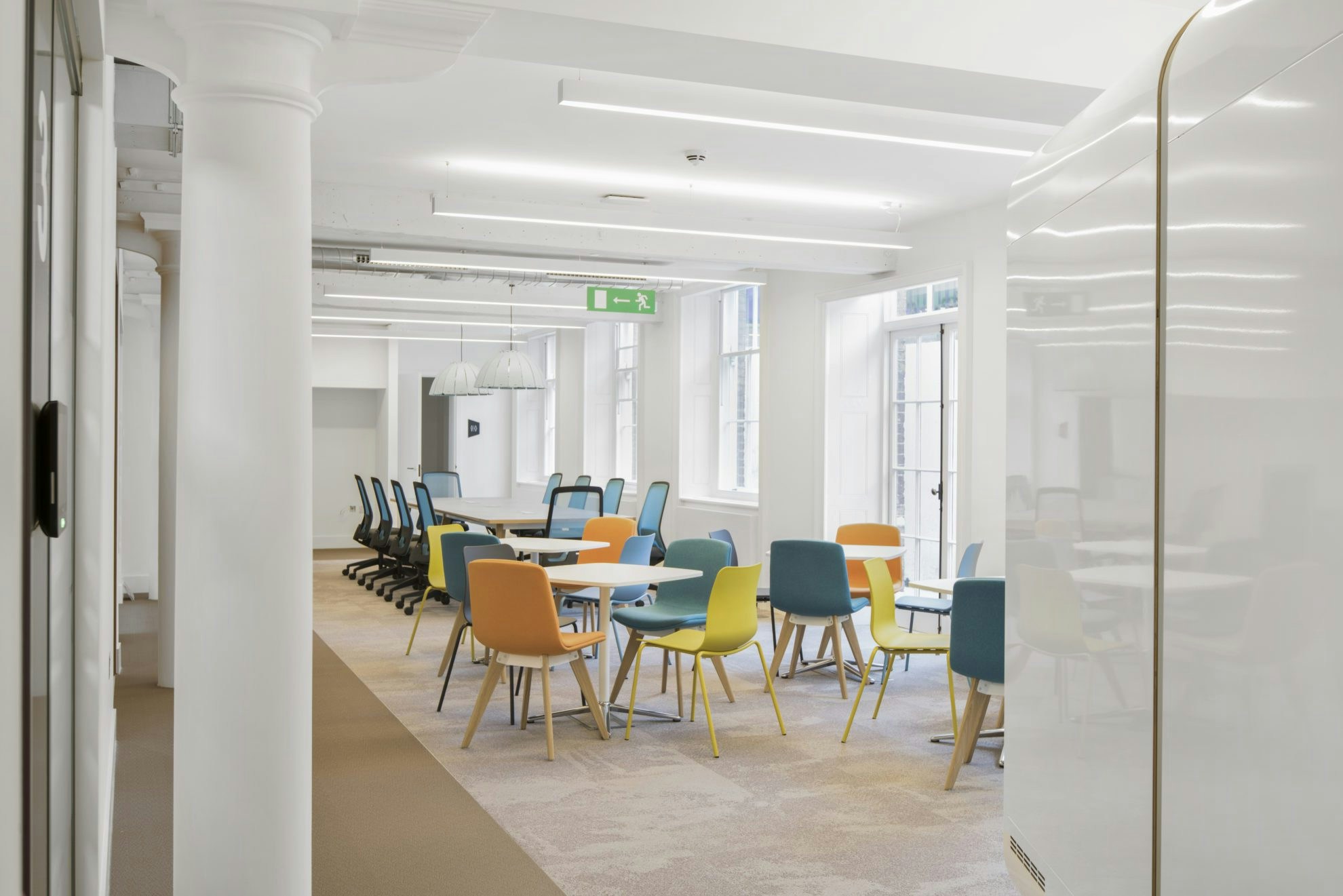As the workplace continues to evolve, office designers are increasingly tasked with creating spaces that not only meet staff needs but that in many cases, exceed them, and nowhere epitomise this more than co-working environments.
 While co-working spaces have existed for many years, it is relatively recently that they have become a part of the mainstream with more and more providers entering the market to meet the needs of an increasingly fluid workforce.
While co-working spaces have existed for many years, it is relatively recently that they have become a part of the mainstream with more and more providers entering the market to meet the needs of an increasingly fluid workforce.
The rising popularity of flexible, hybrid and co-working spaces has certainly been one of the major shifts away from traditional workplaces over the past decade, with many arguing that their creative design and layouts have aided this rise.
There is little doubt that design plays a substantial role for many of the new breeds of co-working providers with occupants’ varied needs playing a central role and influencing the overall layout and aesthetic, creating spaces where people want to work – a destination workplace of sorts.
Consequently, the workplace experience has come to the fore with journeys mapped from the entrance to the desk to departure – everything from the layout, furniture selected, and coffee on offer forms part of this experience. However, it appears that the fundamental remains the same – people want to be able to work in an environment that allows them to be as productive as possible.
Our recent workplace report ‘Meeting Expectations’ which surveyed >1000 UK office workers found that over 20% of UK workers feel that they would be more productive in a better-designed workplace. Furthermore, it has highlighted the fact that staff view access to natural light and also a variety of spaces to where they can choose to work from as absolute essentials in the modern office – the fundamentals like we mentioned are critically important.
This supports a past report by Human Spaces which found that natural light (42%) and quiet workspaces (22%) were the top elements most desired in any office. However, we know that not all offices benefit from an abundance of natural light or have the required room to provide an array of different work areas but that doesn’t mean that they shouldn’t spend time trying to create a workplace that truly works for their organization and staff.
Companies can work with creative office designers to ensure staff are positioned in whatever space gets the best natural light while also using smart LED lighting solutions to complement the natural light. They can also introduce plantlife to reflect nature and the outdoors (another huge plus) or look to utilize otherwise dead space to create private one or two-person booths for calls or concentrated work – the possibilities really are endless with the prerequisite being a desire to optimise the space, wherever it may be.
It will be interesting to see how the next 5-10 years impact the design of co-working spaces and workplaces in general as workers aspire to work in spaces that allow them to be productive and happy at the same time. Unquestionably, companies and many co-working providers will have to significantly up their game when it came to office design, with those pioneers who did so earliest reaping the rewards at present.
